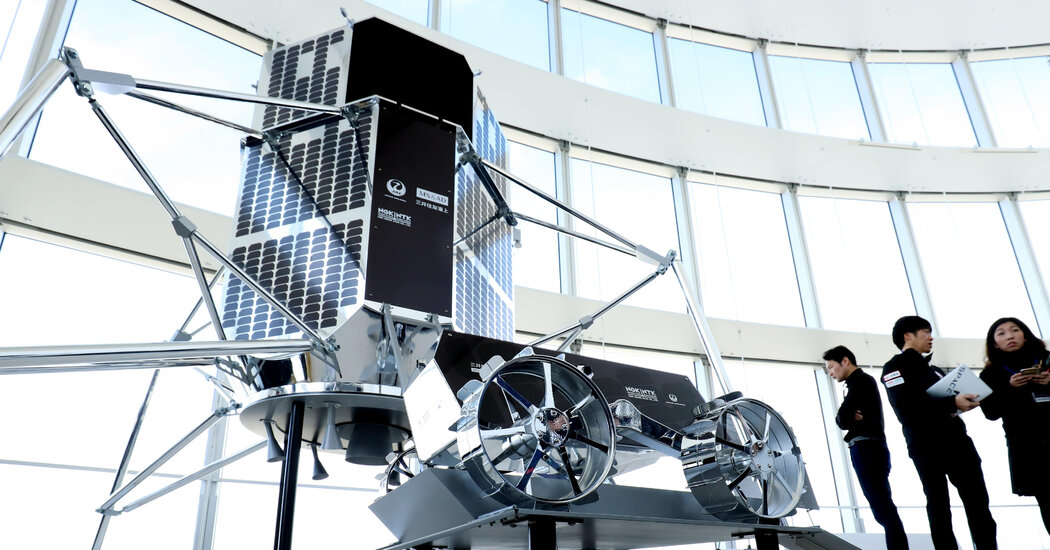The News
A software glitch caused a Japanese robotic spacecraft to misjudge its altitude as it attempted to land on the moon last month leading to its crash, an investigation has revealed.
Ispace of Japan said in a news conference on Friday that it had finished its analysis of what went wrong during the landing attempt on April 25. The Hakuto-R Mission 1 lander completed its planned landing sequence, slowing to a speed of about 2 miles per hour. But it was still about three miles above the surface. After exhausting its fuel, the spacecraft plunged to its destruction, hitting the Atlas crater at more than 200 miles per hour.
The lander was to be the first private spacecraft to successfully set down on the surface of the moon. It is part of a trend toward private companies, not just governmental space agencies, taking a leading role in space exploration.
Why It Matters: Learning and improving.
A review of data showed that the software guiding the descent appeared to lose track of the landers’s altitude when it passed over the rim of a crater on the moon’s surface that was about two miles higher than the surrounding terrain.
The software erroneously concluded that the sensor had malfunctioned and rejected altitude measurements that were actually correct.
The engine, altimeter and other hardware operated properly, indicating that the overall design of the spacecraft is sound. Software fixes are easier to complete than major hardware overhauls.
“This is not a hardware failure,” said Ryo Ujiie, the chief technology officer of Ispace, during a news conference on Friday. “We don’t need to modify the hardware side.”
The failure, however, pointed to shortcomings in Ispace’s testing of the spacecraft’s landing software, which was developed by Draper Laboratory of Cambridge, Mass.
A decision to change the landing site, after the design of the spacecraft was finalized in early 2021, most likely contributed to the crash.
Originally, Ispace officials had chosen Lacus Somniorum, a flat plain, as the landing site. But then they decided that Atlas, an impact crater more than 50 miles wide, would be a more interesting destination.
That meant the landing software was not designed to handle the change in altitude as the spacecraft passed over the crater rim, and simulations did not catch that oversight.
On Tuesday, NASA released images taken by its Lunar Reconnaissance Orbiter that appeared to show the crash site.
Background: A bumpy path to the moon.
A mix of private companies, organizations and government space agencies have tried to return to the moon in recent years. But landing on the lunar surface has turned out to be more difficult than many expected.
The Beresheet lander, from an Israeli nonprofit named SpaceIL, launched to the moon in 2019, but it crashed. The Indian Space Research Organization attempted to land a lunar spacecraft the same year, too, and that vehicle, Vikram, also crashed.
Only China has landed robotic spacecraft on the moon recently, with three successes in three attempts over the past decade.
What’s Next: Try, try again.
Takeshi Hakamada, the founder and chief executive of Ispace, said the schedule for the company’s next two missions — involving an almost identical lander next year and a larger spacecraft in 2025 to the far side of the moon — remains largely unchanged.
“We have a very clear picture of how to improve our future missions,” Mr. Hakamada said.
Ispace had obtained insurance for the lander, and the financial impacts on the company would be small, Mr. Hakamada said.
More spacecraft are scheduled to launch to the moon later this year. As part of a NASA program that is hiring private companies to take scientific instruments to the moon, Astrobotic Technology of Pittsburgh and Intuitive Machines of Houston, are scheduled to send spacecraft to the moon later this year.
The Indian space agency also announced this week that Chandrayaan-3, a follow-up to its moon landing attempt in 2019, could launch as early as July 12.
Kenneth Chang has been at The Times since 2000, writing about physics, geology, chemistry, and the planets. Before becoming a science writer, he was a graduate student whose research involved the control of chaos. @kchangnyt
Source: Read Full Article

